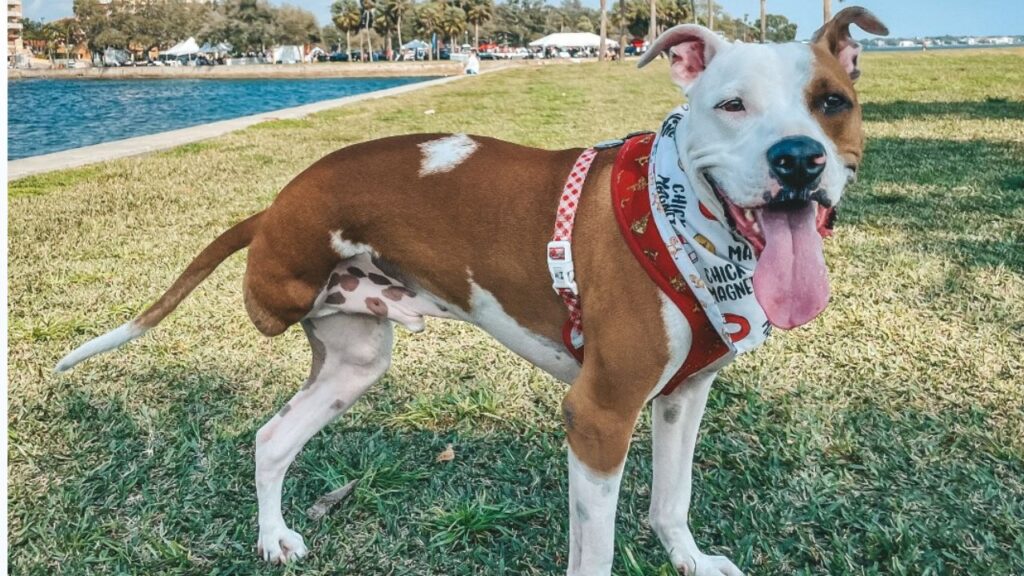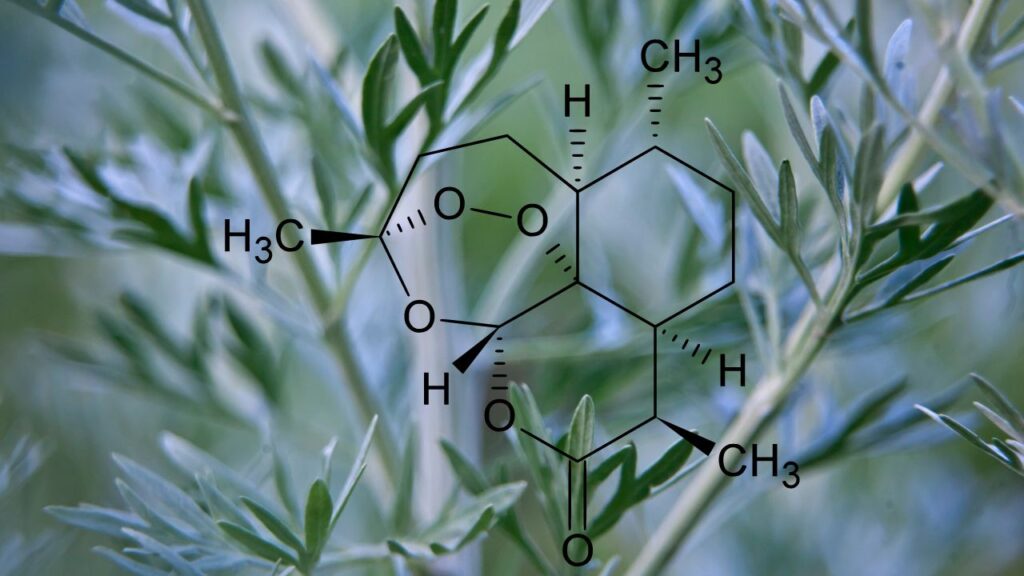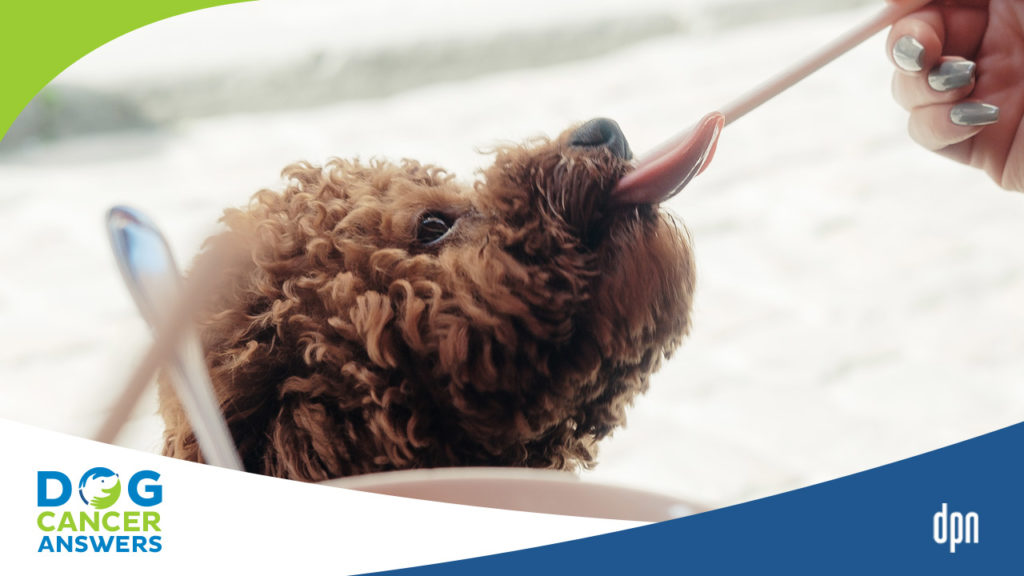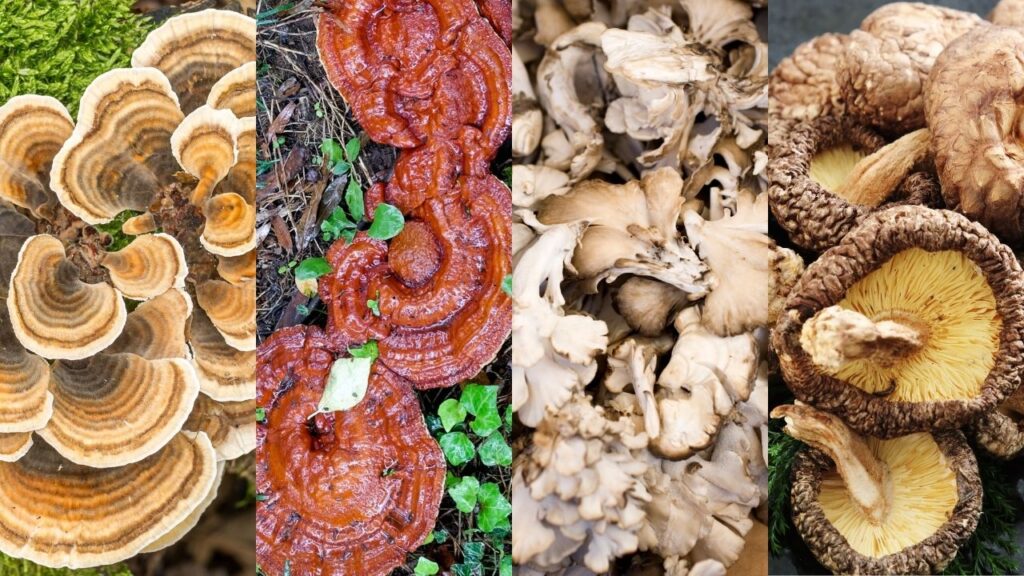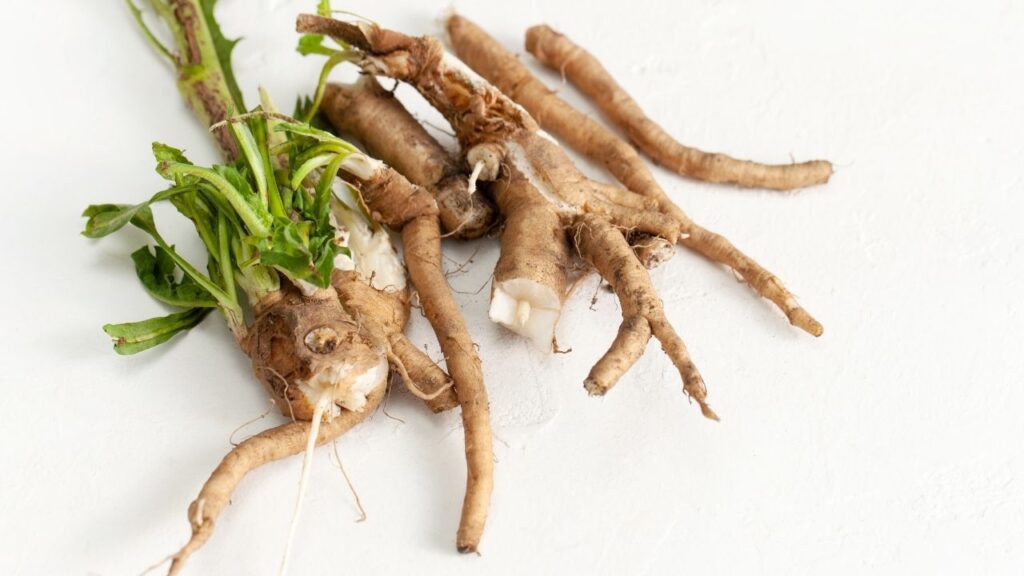Neoplasene is a supplement that is made from bloodroot, a native North American herb. Sanguinarine, its active ingredient, shows promise as a future anti-cancer drug but is still in need of more research and clinical trials. It has been used in animals as an alternative therapy for skin masses such are sarcomas, carcinomas, or sarcoids. It works by tissue necrosis (tissue death) and comes with significant risks, so it should only be used under direct veterinary supervision.
Key Takeaways
- Neoplasene is a product made from blood root for cancer dogs.
- The side effects of neoplasene in dogs include massive tissue death at the site of treatment, inflammation, itching, soreness, and an open wound, followed by scarring.
What Is Neoplasene for Dogs?
Neoplasene is made from bloodroot (Sanguinaria canadensis). Bloodroot, also called red root, puccoon, Indian paint, and snakebite, is a perennial flowering herb native to North America. Bloodroot has a compound, sanguinarine, that has been a subject of interest due to its medicinal properties.
The product Neoplasene is a refined form of the common naturopathic remedy called black salve made from bloodroot. There are several online sources that sell black salve products but Neoplasene is produced by Buck Mountain Botanicals. It is used in horses and in dogs.
What Evidence Do We Have About Neoplasene?
There is a great deal of preclinical work investigating the usefulness of sanguinarine against a variety of cancers including liver,6 colon,7 breast,3,4 ovarian,11-13 lung,2,10 and skin cancer.1,14,15
One study noted that sanguinarine is one of the more cytotoxic (kills cells) of the compounds isolated from bloodroot.1 Other studies suggest it has various effects on tumor cells, including slowing proliferation, migration, and invasion, and triggering apoptosis (cell death).2-7
There is also evidence that sanguinarine may affect the process of blood vessel formation in tumors (angiogenesis) and may disrupt the immunosuppressive environment found in tumors.8-10
A recent notable study of mice with lung cancer compared the traditional chemotherapeutic agent cisplatin to sanguinarine. The cisplatin performed better at reducing tumor growth, but a mechanism involving immune modulation was also noted with sanguinarine.10 This is promising, as attacking cancers from multiple different angles is an important aspect of cancer therapy. Notably, both the cisplatin and the sanguinarine caused weight loss in the mice, often a sign of stress, so the therapy is likely to come with side effects.10
While there is a long list of papers that have studied sanguinarine in the lab and some in mice, it’s difficult to know whether it should be used in dogs at this point. That’s because there have been no clinical trials in humans or animals to determine safe dosing or efficacy.
Additionally, although mouse and in vitro models of lung cancer have shown promising results, it is not clear whether sanguinarine is a better therapeutic option than other drugs.2,8,10
While the large number of preclinical studies might at first seem to support Neoplasene’s use in cancers, it is worth noting that large numbers of drugs and substances start out with many promising preclinical trials. However, fewer than 5% of those drugs that start clinical trials ever make it into the clinic as safe and effective therapies. As it stands, there is no clinical evidence of safety or efficacy in any cancer for Neoplasene or its main ingredient, sanguinarine.
What We Know for Sure
What is clear is that Neoplasene causes tissue necrosis (death). It does not discriminate healthy tissue from diseased tissue, so using it can lead to significant damage.
Common Uses of Neoplasene for Dogs
Currently, Neoplasene is is believed to promote inflammation and therefore kill cancerous tissue. It is used primarily for skin masses stemming from a variety of cancer types, including sarcomas, carcinomas, mast cell tumors, and more.
Safety and Side Effects
It is important to know that herbal products like Neoplasene and black salve are unregulated, so the safety, ingredients, or efficacy are not guaranteed. In fact, there is an FDA warning against using black salve for safety reasons.
There are claims that Neoplasene is a safer alternative to other treatments containing blood root extracts (black salve) but there is no direct evidence supporting that statement.
However, dog lovers cannot purchase and use Neoplasene, only veterinarians can, which means that veterinarians supervise its use.
Getting a medical perspective and guidance is important, because reports of injury due to black salve use abound in the scientific literature.16-19 One startling paper discusses humans self-treating basal cell carcinomas with black salve, resulting in tumor recurrence, pain, and disfigurement.20
The scientific literature has at least one paper detailing two dogs who received Neoplasene.19 Neoplasene was administered by injection into their skin lesions. In one of the dogs, the injection caused such severe damage that surgery and multiple follow up treatments were required. The second dog also did not fare well and needed further medical intervention.
While a few bad outcomes should not be taken to mean that a therapy is always dangerous, it certainly does provide a cautionary tale, and underlines why the manufacture only works with veterinarians.
It is important to note that even in the absence of such severe side effects, topical and injected applications of black salve or Neoplasene will cause massive tissue death at the site of treatment, likely with inflammation, itching, soreness, and an open wound, followed by scarring.
Much like the wounds created by the injectable drug Stelfonta, which is also derived from a plant, the treatment plans for skin lesions that develop after using Neoplasene describe allowing the open wound to remain open, allowing dead, greying, dying skin to slough off naturally. The tissue (normal or cancerous) dies and sloughs in two to ten days, and then the area is treated as an open wound.
Neoplasene with Other Treatments
If your veterinarian suggests Neoplasene, they will share details about how they will use it in your dog’s specific case.
Some suggest that Neoplasene treatment may be paired with surgery for skin cancers or other lesions.
Others suggest using the treatment without surgery.
Some suggest oral formulations as follow up care after surgery to treat metastatic disease or as a primary treatment.
Anti-nausea medication may be suggested concurrent with treatment.16-19
When to Not Use Neoplasene for Dogs
The makers of Neoplasene, Buck Mountain Botanicals, do not mention any drug interactions.
Buck Mountain does suggest not taking anti-inflammatories at the same time as Neoplasene as they believe that inflammatory processes are how it works.
How to Give Neoplasene to Dogs
Neoplasene is commonly delivered as a salve applied to skin lesions, injected, or taken orally.
There is no information on bioavailability and dosing schedules vary.
What If I Miss a Dose?
If your dog is being treated with Neoplasene and you miss a dose, contact the prescribing veterinarian to determine what to do.
Storage and Handling
As Neoplasene causes tissue death on contact, it should be handled with gloves and kept in a secure location away from children and pets.
Buck Mountain Botanicals suggests adding distilled water if the salve dries out.
Our Take on Neoplasene for Dogs
We recommend extreme caution with this treatment. It should only be used under the direct care of a veterinarian. There is extensive evidence that bloodroot, the plant that Neoplasene is derived from, has severe side effects. While Neoplasene claims to avoid those problems by being a purer extract of sanguinarine, there is no reason to believe that this derivative has fewer dangerous side effects.
There are many conventional therapies that may be safer to use or require less extreme caution. Veterinarians who are familiar with and use Neoplasene can advise you about the specifics of your dog’s case and its use as a primary or rescue treatment.
- Croaker A, Davis A, Carroll A, Liu L, Myers SP. Understanding of black salve toxicity by multi-compound cytotoxicity assays. BMC Complement Med Ther. Sep 20 2022;22(1):247. doi:10.1186/s12906-022-03721-y
- Prabhu KS, Bhat AA, Siveen KS, et al. Sanguinarine mediated apoptosis in Non-Small Cell Lung Cancer via generation of reactive oxygen species and suppression of JAK/STAT pathway. Biomed Pharmacother. Dec 2021;144:112358. doi:10.1016/j.biopha.2021.112358
- Su Q, Wang J, Fan M, et al. Sanguinarine disrupts the colocalization and interaction of HIF-1α with tyrosine and serine phosphorylated-STAT3 in breast cancer. J Cell Mol Med. Mar 2020;24(6):3756-3761. doi:10.1111/jcmm.15056
- Su Q, Wang J, Wu Q, et al. Sanguinarine combats hypoxia-induced activation of EphB4 and HIF-1α pathways in breast cancer. Phytomedicine. Apr 2021;84:153503. doi:10.1016/j.phymed.2021.153503
- Ullah A, Ullah N, Nawaz T, Aziz T. Molecular mechanisms of Sanguinarine in cancer prevention and treatment. Anticancer Agents Med Chem. Aug 31 2022;doi:10.2174/1871520622666220831124321
- Wang J, Su Q, Wu Q, et al. Sanguinarine impairs lysosomal function and induces ROS-dependent mitophagy and apoptosis in human hepatocellular carcinoma cells. Arch Pharm Res. Nov 2021;44(11):1025-1036. doi:10.1007/s12272-021-01356-0
- Zhu M, Gong Z, Wu Q, Shi X, Su Q, Zhang Y. Sanguinarine suppresses migration and metastasis in colorectal carcinoma associated with the inversion of EMT through the Wnt/β-catenin signaling. Clin Transl Med. Jan 2020;10(1):1-12. doi:10.1002/ctm2.1
- Cui Y, Luo Y, Qian Q, et al. Sanguinarine Regulates Tumor-Associated Macrophages to Prevent Lung Cancer Angiogenesis Through the WNT/β-Catenin Pathway. Front Oncol. 2022;12:732860. doi:10.3389/fonc.2022.732860
- Dakup PP, Porter KI, Little AA, et al. The circadian clock regulates cisplatin-induced toxicity and tumor regression in melanoma mouse and human models. Oncotarget. Mar 6 2018;9(18):14524-14538. doi:10.18632/oncotarget.24539
- Li B, Luo Y, Zhou Y, Wu J, Fang Z, Li Y. Role of sanguinarine in regulating immunosuppression in a Lewis lung cancer mouse model. Int Immunopharmacol. Sep 2022;110:108964. doi:10.1016/j.intimp.2022.108964
- Sarkhosh-Inanlou R, Molaparast M, Mohammadzadeh A, Shafiei-Irannejad V. Sanguinarine enhances cisplatin sensitivity via glutathione depletion in cisplatin-resistant ovarian cancer (A2780) cells. Chem Biol Drug Des. Feb 2020;95(2):215-223. doi:10.1111/cbdd.13621
- Yang L, Zhao H, Yin X, et al. Exploring cisplatin resistance in ovarian cancer through integrated bioinformatics approach and overcoming chemoresistance with sanguinarine. Am J Transl Res. 2020;12(3):923-939.
- Zhang S, Leng T, Zhang Q, Zhao Q, Nie X, Yang L. Sanguinarine inhibits epithelial ovarian cancer development via regulating long non-coding RNA CASC2-EIF4A3 axis and/or inhibiting NF-κB signaling or PI3K/AKT/mTOR pathway. Biomed Pharmacother. Jun 2018;102:302-308. doi:10.1016/j.biopha.2018.03.071
- Burgeiro A, Bento AC, Gajate C, Oliveira PJ, Mollinedo F. Rapid human melanoma cell death induced by sanguinarine through oxidative stress. Eur J Pharmacol. Apr 5 2013;705(1-3):109-18. doi:10.1016/j.ejphar.2013.02.035
- Tuzimski T, Petruczynik A, Plech T, et al. Determination of Cytotoxic Activity of Sanguinaria canadensis Extracts against Human Melanoma Cells and Comparison of Their Cytotoxicity with Cytotoxicity of Some Anticancer Drugs. Molecules. Mar 20 2021;26(6)doi:10.3390/molecules26061738
- Bozung AK, Ko AC, Gallo RA, Rong AJ. Persistent Basal Cell Carcinoma Following Self-Treatment With a “Natural Cure,” Sanguinaria canadensis. Ophthalmic Plast Reconstr Surg. Mar-Apr 01 2021;37(2):e71-e73. doi:10.1097/iop.0000000000001784
- Rosario N, Castro JF. Black salve: risky escharotic. Scars Burn Heal. Jan-Dec 2022;8:20595131221122376. doi:10.1177/20595131221122376
- McDaniel S, Goldman GD. Consequences of Using Escharotic Agents as Primary Treatment for Nonmelanoma Skin Cancer. Archives of Dermatology. 2002;138(12):1593-1596. doi:10.1001/archderm.138.12.1593
- Childress MO, Burgess RC, Holland CH, Gelb HR. Consequences of intratumoral injection of a herbal preparation containing blood root (Sanguinaria canadensis) extract in two dogs. Journal of the American Veterinary Medical Association. 2011;239(3):374-379.
- Hou JL, Brewer JD. Black salve and bloodroot extract in dermatologic conditions. Cutis. 2015;95(6):309-311.
Topics
Did You Find This Helpful? Share It with Your Pack!
Use the buttons to share what you learned on social media, download a PDF, print this out, or email it to your veterinarian.
